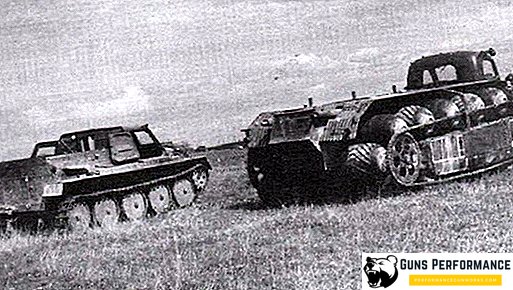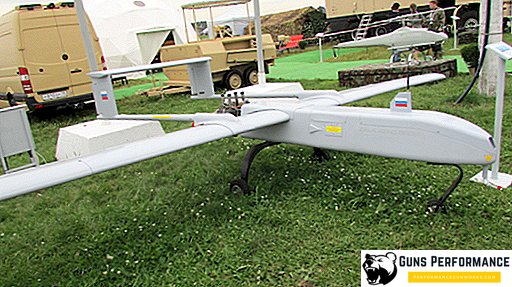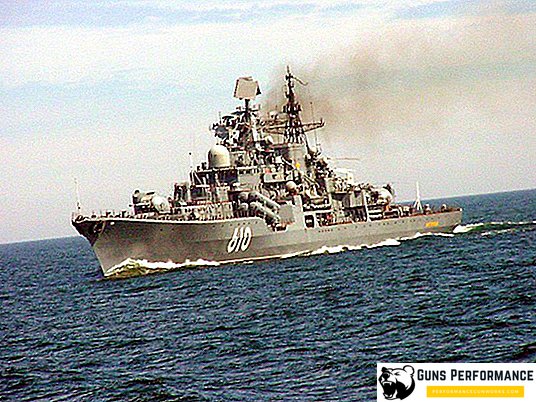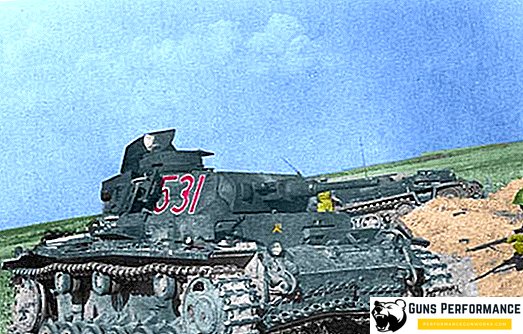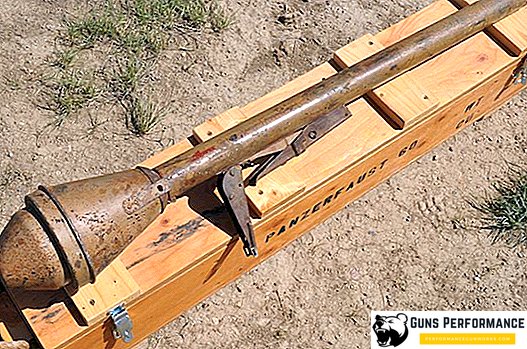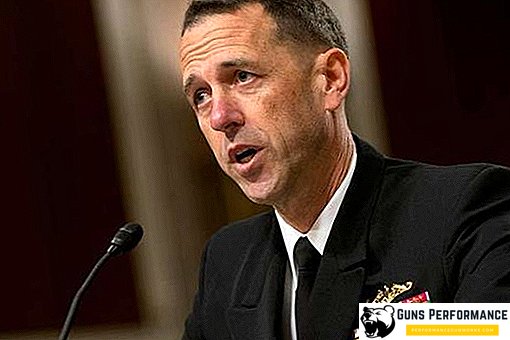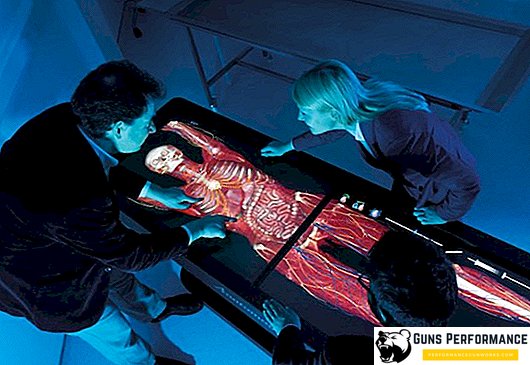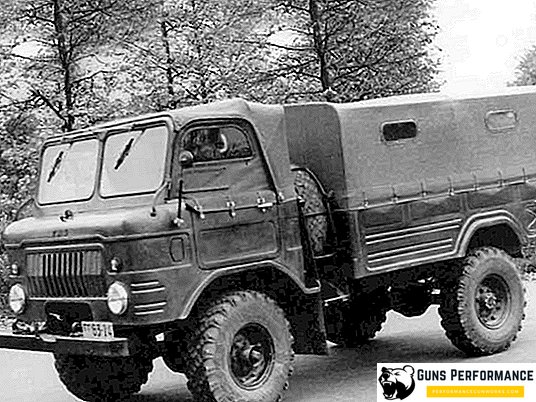The Ministry of Defense of the Russian Federation is the state body responsible for defense policy and defense activities in the state.
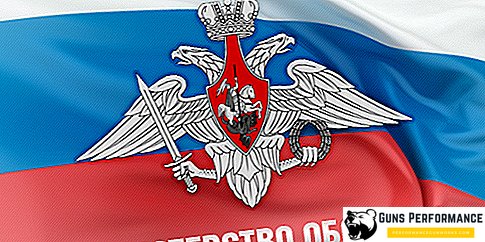
Historical excursion
The Russian state appeared and developed in a difficult situation. That is why almost immediately, with the emergence of the army, the need arose for a single body responsible for conducting various military activities, as well as troop control. The situation changed in 1531. It was then that the discharge order (or discharge) was created. The competence of this body was to recruit rati and provide it with supplies. Later, the interests of the discharge included the construction of fortresses and a zasechnaya line. In addition, the Bit Order carried out the command and control of troops in the southern outskirts of the state. During the second half of the XVI, as well as the whole of the XVII centuries, the discharge order continued to manage the military affairs of the power.
The situation changed only at the beginning of the XVIII century, when the reforms of Peter I affected almost all spheres of life of the Russian state. Not bypassed, of course, and military affairs. Thus, the Military Collegium replaced the Bit order, which performed essentially the same functions with the only difference that the time of the Tatar raids on Russia was over, and special attention to the southern borders of the state was no longer required. It was during and thanks to the Military Collegium that Russian weapons gained glorious victories over Turkey, Sweden, Poland and Prussia, annexing vast territories to the country.
At the beginning of the 19th century, a special manifesto of Emperor Alexander I was published. According to it, the Military Collegium was abolished. It was replaced by the Ministry of Ground Forces. Six years later, in 1808, this Ministry was reformed into a Ministry of War with the same functions and powers.
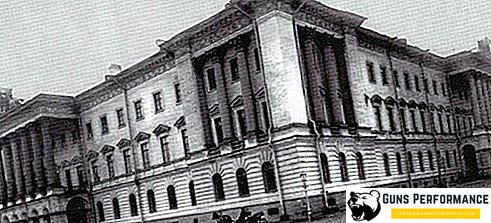
The Patriotic War of 1812 marked a new era of military history. The difficult situation on the battlefields with France demanded a radical change in the Ministry of War according to the new requirements, which was carried out in the same year. Due to changes in the structure of the ministry, a number of departments were formed: engineering, inspection, artillery, auditing, food, medical and commissariat. Separately, it is also worth mentioning the ministerial council and the office, not included in any of the offices, but was part of the ministry.
In 1815, for a short period of time (about a year), the Military Ministry of Russia became for a time part of the General Staff. However, this way of organizing the management of military affairs quickly showed its inconsistency.
After 20 years, it was the turn to reunite the General Headquarters and the Ministry of War. In this case, this time the General Staff became part of the latter. However, no qualitative changes in the structure of the Military Ministry took place for another 24 years. Everything changed the Crimean War, during which the Russian army suffered serious losses. The backwardness of the Russian army in the technical and organizational aspects became obvious.
In 1861, Emperor Alexander II appointed Field Marshal D. A. Milyutin as Minister of War. It was Milyutin who became the initiator of extensive military reform in the state, which became like a fresh breath of air for the army that had barely recovered from the defeat. In the course of the reform, a territorial system of military administration was introduced, manifested in the creation of military districts in the country. Also, military service was introduced for all classes, which solved a number of problems with the recruitment of the army. A separate item was also the adoption of new small arms.
The military reform of D. A. Milyutin was reflected in the structure of the Military Ministry. Thus, as of 1870, it included: the imperial headquarters, the main headquarters, the office of the military minister, the military council, as well as the main directorates (artillery, military schools, Cossack troops, quartermaster, engineering, military judicial and military medical) .
However, Russia did not have long to take advantage of these military reforms: during the Russian-Japanese war in 1904-1905, its shortcomings were revealed and, if for the 1870s it was completely modern, then by the beginning of the 20th century it was completely outdated. For more effective command and control of the army during the Russo-Japanese War, the Council of State Defense was created, which was abolished in 1908. A number of measures also followed, designed to seriously reorganize the army of the Russian Empire, but they were not fully implemented.
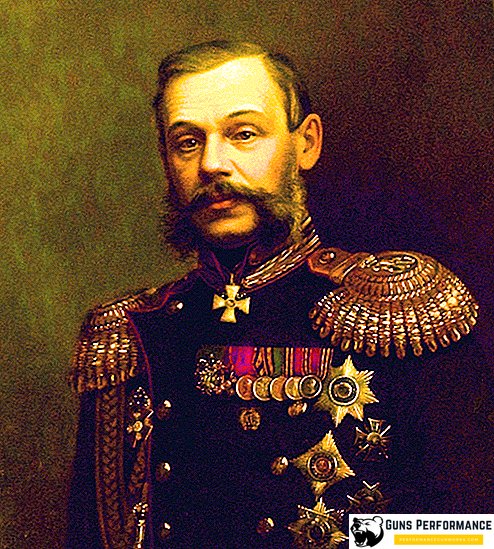
In 1914, World War I broke out. In the same year, the Supreme Commander was established. At the same time it existed simultaneously with the Ministry of War.
After the October Revolution, both of these bodies were disbanded, and the People’s Commissariat for Military Affairs took their place. However, during the Civil War and in the first peaceful years, general military control was exercised by a special body created for these purposes. This body was the Council of Workers 'and Peasants' Defense. In 1923, he was replaced by the People's Commissariat for Military and Naval Affairs. His function was the construction of the Workers 'and Peasants' Red Army and Navy, as well as ensuring their vital activity.
Thanks to the rapid growth and development of the Red Army, already in 1934, the People's Commissariat for Military and Naval Affairs was reorganized. As a result, the People's Commissariat of Defense of the USSR was formed. Three years later, the People's Commissariat of the Navy separated from him. His task was to manage the fleet and naval bases.
June 22, 1941, Hitler's Germany attacked the USSR, and the Great Patriotic War began. Already on June 23, the Headquarters of the Command was formed, which existed along with the People's Commissariat of Defense. The rate of the High Command lasted until July 10, 1941, and it was replaced by the High Command Headquarters (from July 10 to August 8, 1941), and then by the Headquarters of the Supreme Command (from August 8, 1941). Also in March 1944, the People's Commissariat of Defense of the RSFSR was created.
After the end of the Great Patriotic War, the need for the Supreme Command was eliminated. Already on August 3, 1945, it was abolished, and the respective powers were again transferred to the People's Commissariat of Defense and the People's Commissariat of the Navy of the USSR. At the end of the winter of 1946, both people's commissariat were merged into a single body. He received the name of the Commissariat of the Armed Forces, and a month later he was renamed the Ministry. Following this, the People's Commissariat of Defense of the RSFSR was transformed into the Ministry of the Armed Forces of the RSFSR.
A new division of the Ministry of the Armed Forces of the USSR followed already in 1950. Owing to this division, two ministries were formed: the Military and the Naval. However, three years later, they were again merged into a single USSR Ministry of Defense. In parallel, the Ministry of the Armed Forces of the RSFSR was transformed into the Ministry of Defense of the RSFSR.
During the Cold War, the USSR Ministry of Defense adequately coped with all the tasks that arose before it. The development of the Armed Forces continued, new types of troops were created, and the army was equipped with new types of weapons. In 1978, the Ministry of Defense of the RSFSR was abolished. This happened because the general control over the Armed Forces and the military administration was under the jurisdiction of the USSR Ministry of Defense. With the collapse of the Soviet Union, all USSR ministries, including the Ministry of Defense, were eliminated.
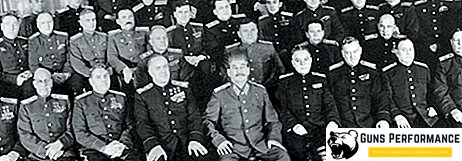
Ministry of Defense at the present stage
March 16, 1992 was created the Ministry of Defense of the Russian Federation. This federal body is responsible for state policy in the military sphere, as well as management in the field of defense.
In difficult conditions, the Ministry of Defense managed to retain the Armed Forces, as well as ensure their development and equipment with new types of equipment. With the beginning of the 2000s, the situation began to improve. The same period was marked by a number of major changes in the structure of the Armed Forces and the Ministry of Defense of the Russian Federation. From 1991 to 2007, six people replaced the post of Minister of Defense (B.N. Yeltsin, P.S. Grachev, M.P. Kolesnikov, I.N. Rodionov, I.D. Sergeev, S. B. Ivanov).
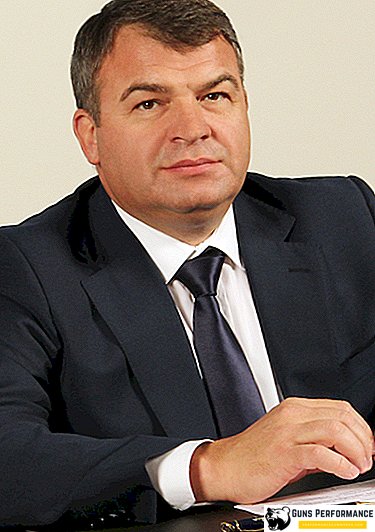
In 2007, after the appointment of A. Serdyukov to the post of defense minister, military reform began, which was to completely change the Armed Forces of Russia and significantly modernize them. Military reform suggested:
- The abolition of military districts and their replacement with operational strategic directions. Thus, instead of six military districts, four directions were formed: “Center”, “East”, “West” and “South”.
- The elimination of such tactical units as divisions and corps and the transition to the brigade structure of the Armed Forces.
- Widespread involvement of civilian specialists in the life support of the army (for example, civilian cooks in the canteen).
- Deep reform of the system of military schools.
- Significant mitigation of military service conditions for conscripts (for example, permission to use telephones, running in sneakers instead of army boots, etc.).
- Transfer to the brigade system of the Air Force.
- Reduction of military authorities.
- The beginning of a large-scale process of rearmament.
However, it was not possible to complete this reform. In 2012, instead of Anatoly Serdyukov, Sergei Shoigu was appointed Minister of Defense of the Russian Federation. The beginning of a qualitatively new period in the history of the Armed Forces of Russia and the Ministry of Defense in particular is associated with his name.
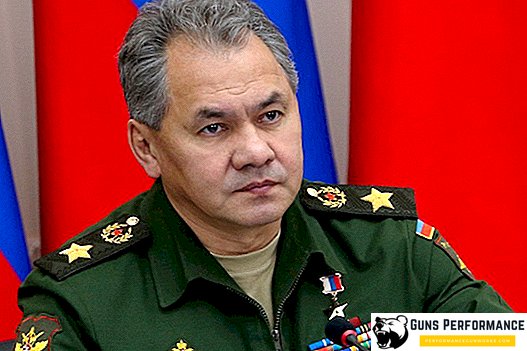
Structure of the Ministry of Defense of the Russian Federation
Today, the Ministry of Defense of Russia is a complex, but very slim and well-organized structure. The main structural units of the Ministry are: the General Headquarters of the Armed Forces, the Main Administrations and Services, the Central Administrations, the Economy and Finance Services, the quartering and arrangement services, the apparatus, the Main Command, Command and Press Organs of the Ministry of Defense.
The General Headquarters of the Armed Forces of the Russian Federation is the central military authority of the Ministry of Defense, as well as the main body exercising the operational control of the Armed Forces. It consists of the following directorates:
- The main operational management is the body of the General Staff responsible for planning military operations at various levels.
- The Main Directorate (it is also the Main Intelligence Directorate) is the body of the General Staff responsible for conducting foreign intelligence.
- The Main Organizational-Mobilization Directorate of the Ministry of Defense has as its function the carrying out of mobilization activities in the territory of the country, and also deals with issues of preparation for possible military operations.
- The military topographic directorate is the organ of the General Staff that provides topographic support for the army (for example, maps or terrain plans).
- The 8th Directorate is the one responsible for encrypting, decrypting, and conducting electronic intelligence.
- The Operational Training Directorate implements operational action planning.
- Office of the construction and development of unmanned aerial vehicles (UAVs).
- The National Center for Defense Management of the Russian Federation performs the functions of the main command post for the General Staff.
- Military orchestral service.
- Archival service.
- Military Science Committee.
The central offices within the Ministry of Defense of Russia are represented by the following structures:
- The Central Office of Military Communications, which is the representative of the Ministry of Defense on land, air, river and railway tracks.
- Central Automobile and Road Administration.
- Central Food Authority, providing food to the Armed Forces.
- Central Office of rocket fuel and fuel.
- The command of the railway troops.
- Central clothing management.
- Management of environmental safety.
- Single center order and supply of the rear.
- Veterinary and sanitary service.
- 9th Central Office - this department ensures the functioning of special facilities at the disposal of the Ministry of Defense.
The quartering and settlement service settles the personnel of the Armed Forces, as well as resolves a number of housing problems. This service has the following divisions:
- Directly service quartering and arrangement.
- Management of arrangement of troops.
- Office of the implementation of housing programs.
- The main apartment operational management.
- The central organizational and planned management of capital construction, which organizes the construction of new houses for military personnel and their families.
The service of economics and finance provides the personnel of the Armed Forces with money allowances, and also performs all functions related to finance. Subdivided into:
- Main financial and economic management.
- Management of labor and wages of civilian personnel.
- Accounting and reporting department.
- Financial Planning Department.
The Service of the Ministry of Defense of the Russian Federation (Apparatus) has the following structures:
- General Directorate of International Military Cooperation.
- Management to monitor the implementation of contracts.
- Main legal department.
- Office of the Ministry of Defense.
- Financial Inspection.
- Office of the press service and information.
- Office.
- Reception.
- Expert Center Apparatus.
- Economic management.
- Office of the Inspectors General.
- Road transport management.
The main commands manage the types of the Armed Forces of the Russian Federation. Currently, there are three Main Command: Ground Forces, Navy and Aerospace Forces.
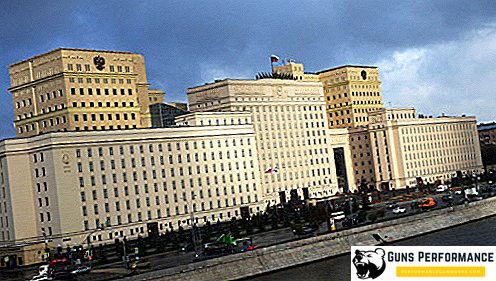
The commands that are part of the Ministry of Defense manage individual types of troops. There are two such commands: the Airborne Forces and the Strategic Missile Forces.
The press organs of the Ministry of Defense of the Russian Federation are represented by periodicals such as: “Military History Magazine”, “Warrior of Russia” and “Red Star”.
Conclusion
Today, the Ministry of Defense of the Russian Federation is a powerful body capable of operatively exercising military control in the country. It makes no sense to prove that the power and strength of the army lies precisely in the possibility of controlling this force. The structure of the Ministry of Defense is designed in such a way as to make the management of the army as clear and precise as possible. Not only rigorous selection of staff for the Ministry, but also new technologies helps in this.
The control system of the Armed Forces of the Russian Federation is constantly being improved. The experience gained as a result of the hostilities in Syria is analyzed, systematized and taken into account when planning further actions of the army. Another important task entrusted, however, not only to the Ministry of Defense, is the fight against international terrorism, which has the goal of causing enormous damage to the whole world.
Nevertheless, in such a complex international situation, the Ministry of Defense of Russia with honor and dignity continues to fulfill its direct duties and fulfill them with great success, and its effectiveness is very high. Proceeding from all this, I would like, of course, to conclude that with the beginning of the 2010s, the long-awaited period of revival of the Russian Army began.


